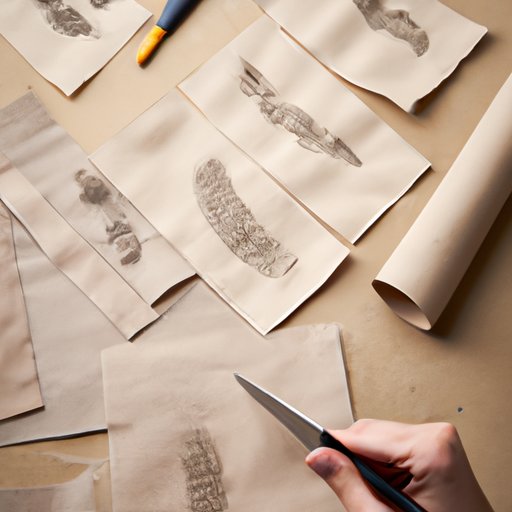The Art of Paper Making: A Comprehensive Guide
Paper is an integral part of our daily lives, and while it may seem like a simple commodity, the process of making paper from scratch is truly an art form. Making your paper can be a fun and satisfying experience, and it’s a great way to reduce waste while creating unique and personalized projects. In this article, we’ll take you through the step-by-step process of making paper from scratch. In addition, we’ll also discuss how to make recycled paper, creating arts and crafts with children, using paper for calligraphic purposes, and even making paper-based home decor!
Step-by-Step Guide
The process of making paper from scratch requires only a few materials and tools. You will need a deckle (a frame with a screen), a blender, paper scraps or linen/cotton clothes, and water. To begin, rip the paper scraps or linen/cotton clothes into small pieces and blend them with water in a blender until the mixture becomes a pulp. Place the deckle in a large container filled with water and pour the pulp mixture onto the deckle. Use the deckle to evenly distribute the pulp, then gently remove the deckle from the water and let the excess water drain off. Place the deckle on a flat surface and use a cloth or sponge to pat the paper flat. Once the top of the paper is dry, flip it over and repeat the process until all the water is gone. This process usually takes about 24 hours to complete.
Recycled Paper
Recycling paper is an excellent way to reduce waste and ensure that paper-based products can be reused. To make recycled paper, collect used paper and cardboard, rip it into small pieces, and soak them in water overnight. Blend the paper mixture until it becomes a pulp, then use the process outlined in the previous section to create new paper. To add color and scents to the recycled paper, consider using natural dyes and essential oils.
Kids’ Arts and Crafts
Making paper is a fun activity for kids and provides an opportunity for them to get creative. Kids can use a variety of materials to add colors, textures, and shapes to their paper creations. Some kid-friendly materials include glitter, pom-poms, stickers, and paint. Consider making bookmarks, picture frames, or paper lanterns with the kids.
Calligraphy
If you’re into calligraphy, you know how important it is to use quality paper to showcase your penmanship. Different types of paper work well for calligraphy, including Japanese paper, Maruman paper, and Arches hot press watercolor paper. To make paper specifically for calligraphy, consider using kozo or mulberry bark, which can be purchased at most art stores. The process of making calligraphy paper is the same as making regular paper, but it’s important to make sure the paper is smooth and absorbent to handle ink well.
DIY Home Decor
Paper-based home decor can be an affordable and creative solution to sprucing up your living space. You can find a variety of colored and patterned paperprints available online or make your own using the process outlined in the first section. Consider creating a paper collage, making a lampshade out of patterned paper or creating a wall-art mural. You can also craft paper flowers in various colors and textures and use them to decorate jars or vases.
Paper-Making Workshops
If you enjoy making paper, consider hosting a paper-making workshop with friends or family. To start, you’ll need to provide all the materials needed for the workshop, including the deckles, blending machines, and pulp. Consider adding essential oils or food coloring to the pulp to add extra flair to the paper. Teaching others how to make paper is a great way to share your skills, reduce waste, and promote creativity!
Conclusion
Now that you have comprehensive knowledge about making paper from scratch, don’t hesitate to try making paper yourself, experimenting with different materials, and trying different techniques. From creating paper-based arts and crafts with kids to crafting paper flowers, paper-making is a versatile and fun DIY practice that can enhance your creativity and reduce waste simultaneously.
